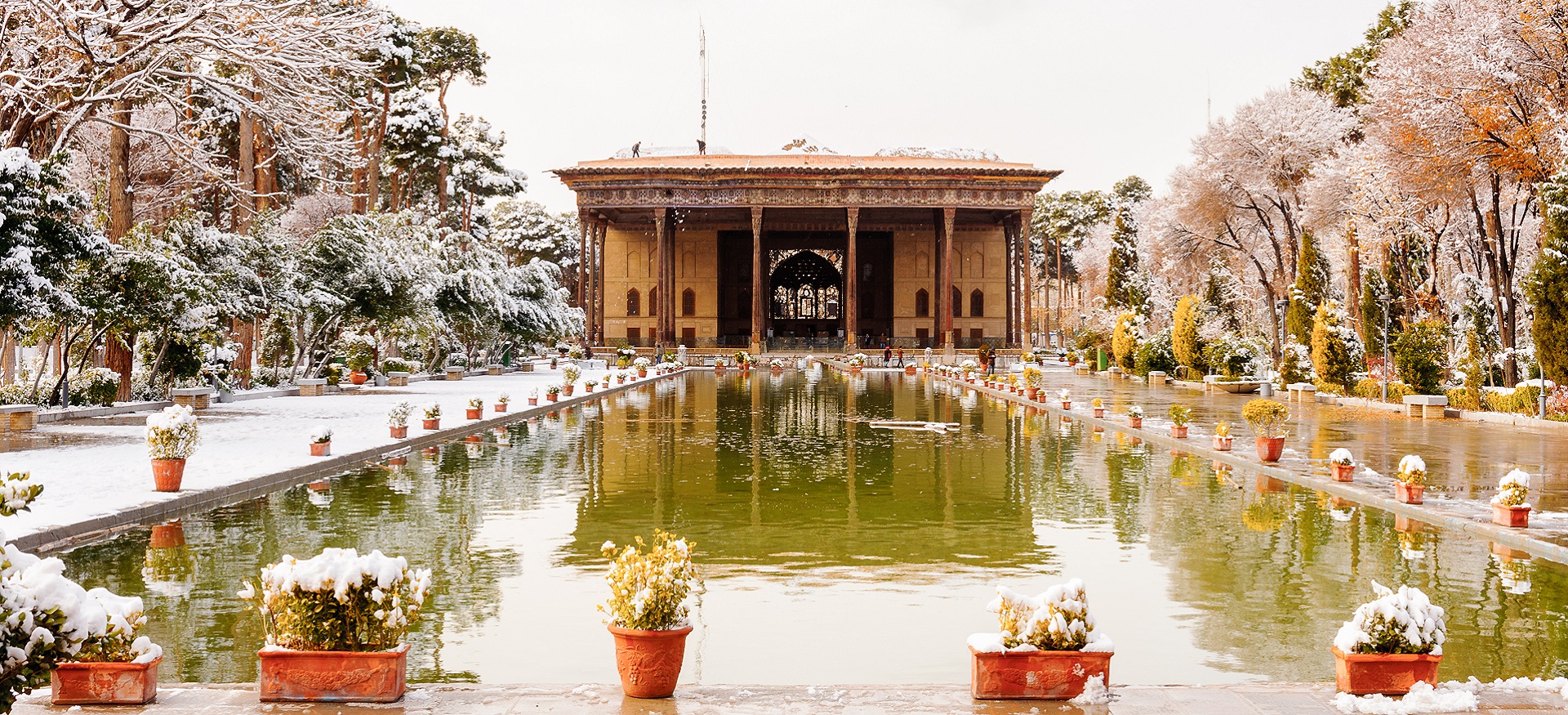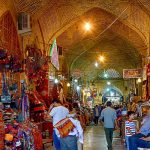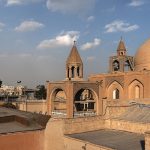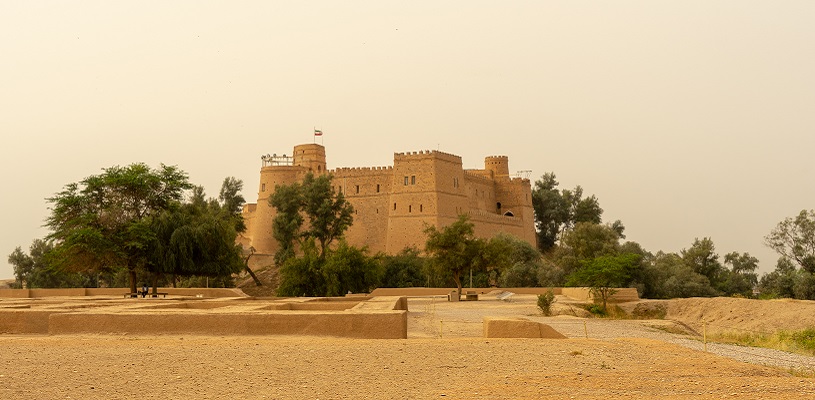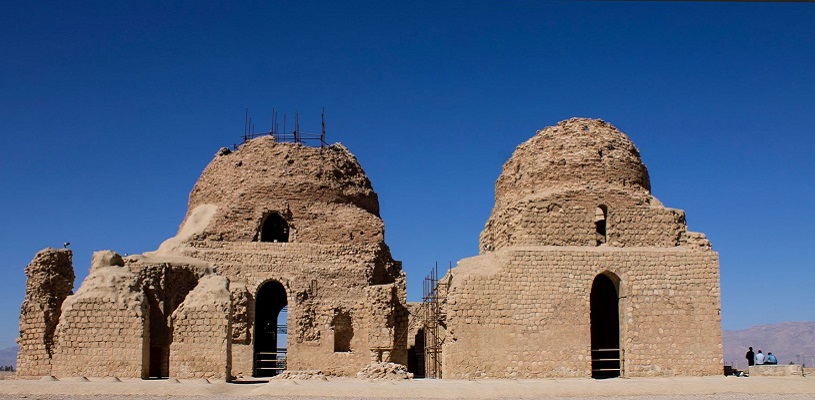
Chehel Sotoon Palace (Isfahan, Iran) | Chehel Sotoun
Chehel Sotoun (Chehel Sotoon – Chehel Sotun) is one of the most famous attractions in Isfahan. It is near Naqsh-e Jahan square and by walking a few steps from Naqsh-e Jahan, you will reach there. This easy access is the tourists’ favorite part. Because of its extraordinary features, this place is on the UNESCO World Heritage List. Of course, there are many attractions in Isfahan and each of them has a unique beauty. But the huge pillars, paintings, mirrors, and precious tiles of this building have made it one of the masterpieces of the Safavid era. Join me to learn more about this magnificent work.
Contents
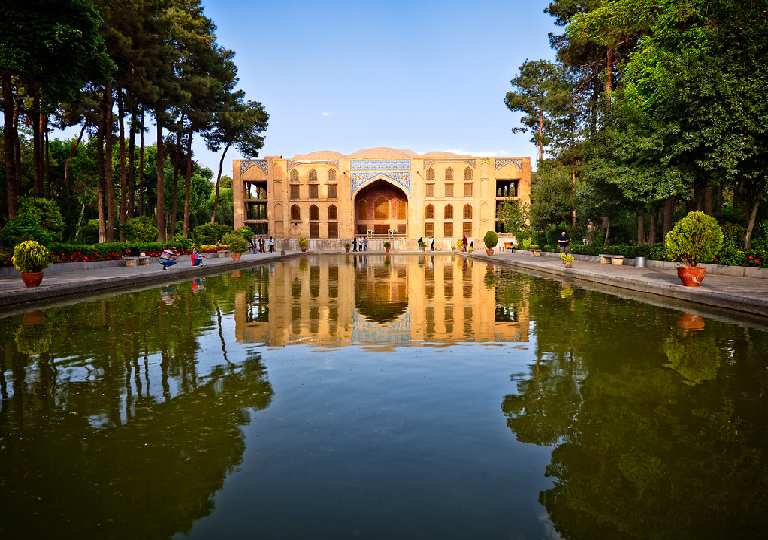
The facade of Chehl Sotoon Palace
Why Chehel Sotoon Palace?
- Chehel Sotoon Palace and Garden are both on the UNESCO World Heritage List.
- Chehel Sotoun is one of the most famous and beautiful attractions of Isfahan.
- It is a unique example of Iranian art.
- Its Paintings, tiling and mirror work are very valuable and beautiful.
- It is a popular place for photography.
- The museum of Chehel Sotoun showcases must-see works of artistic and historical value.
The Story of Chehel Sotoun
Chehel Sotoun palace is in the middle of a beautiful garden with lots of old trees. The original plan for the construction of this garden and palace dates back to the time of Shah Abbas I (1588 to 1629) who chose Isfahan as the capital of Safavid dynasty. He decided to build a long street called Chaharbagh Street and created beautiful gardens around it. He built the first pavilion in the middle of a large garden, and this led to the construction of this palace. In Safavid era, guests were invited to the palace for royal ceremonies.
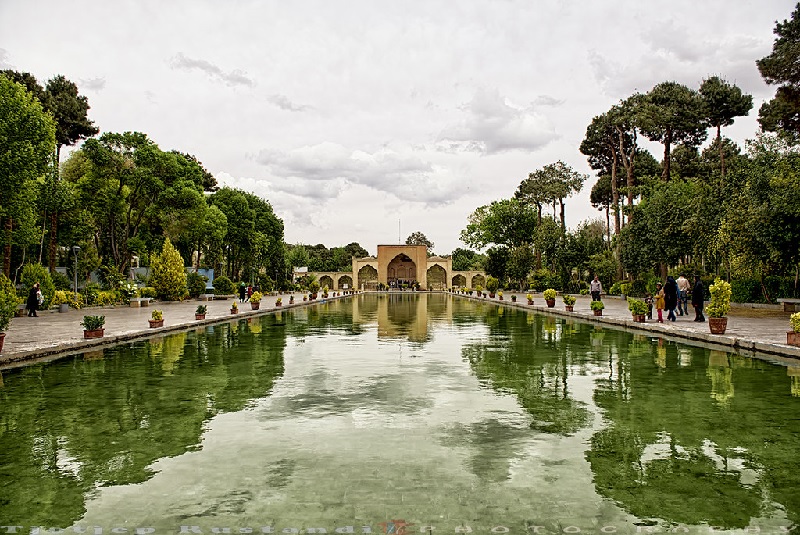
Chehel Sotoon Palace – Chehel Sotoun garden
How Chehel Sotoon Palace Looks
This monument consists of two parts: the garden and the palace. By entering the garden area, you will see a large rectangular pool and a handsome iwan (a vaulted portal opening into a courtyard) behind it. Reflecting the iwan and the garden on its surface, the pool creates a charming sight that’s perfect for photography. On both sides of the pool, you can see old and tall trees that have given a pleasant freshness to the garden.
Surely, if you know royal and magnificent ceremonies were held next to these trees, visiting the palace will be more attractive for you. Next to the pool, you will see sculptures with which many tourists take photos. After enjoying the beauty of the exterior part of the palace and the fresh atmosphere of the garden, you will see that in front of you is the main palace that features attractive paintings and magnificent architecture.
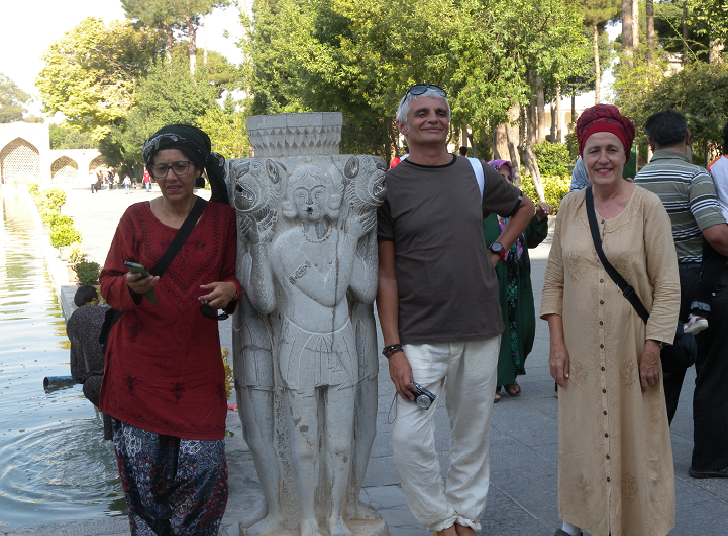
Sculptures in Chehel Sotoon Palace
The Main Iwan – Chehel Sotoun Palace
Passing by the pool, you will reach the main iwan of the palace. This iwan is originally placed on 20 pillars and the reflection of these 20 pillars on the water shows us 40 pillars and because of this reflection, the palace has the title of Chehel Sotoun (meanings a place with 40 pillars).
The iwan of Chehel Sotoun Palace consists of two parts. The first part has 18 wooden pillars with wooden and stone bases. There are four pillars in the middle part that are standing on four stone lions. In the past the water came out of the mouth of these four stone lions and poured in a beautiful small marble pool. These items increase the beauty of this unique iwan. The second part of the iwan is a little higher than the first part, the entrance to the Hall of Mirrors. It has two pillars and its walls are covered with mirror work. This hall is an amazing place to see.
Behind the main iwan of Chehel Sotoun palace, there are two very similar and symmetrical parts. The lower part of the facade of these parts is beautifully decorated with marble stones. On the other hand, their iwans feature many latticed doors and windows. Today we use these parts as a place to display ancient and historical items as well as images of the travelogues of tourists who visited Isfahan in the past.
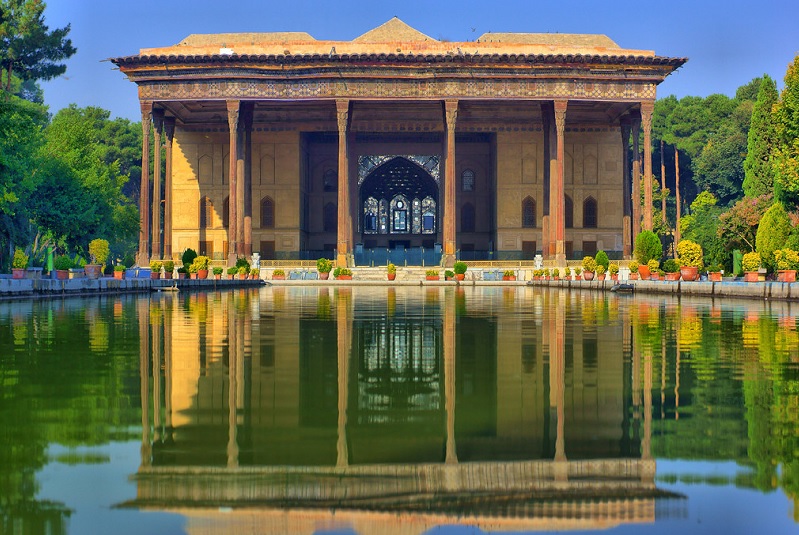
Chehel Sotoun Pillars – Chehel Sotoon Palace
The Main Hall – Chehel Sotoon
Chehel Sotoun Palace is a combination of Iranian, Chinese and French architecture. Yet, you can see symmetry in the construction of all components and structures of the building. This symmetry is evident in the wooden decorations, paintings, plaster work and mirror work. The design of this hall is like a square and there are three iwans on three sides of the structure. The presence of these three iwans creates a pleasant view of the garden.
Chehel Sotoun Palace is one of the first palaces that features a range of artistic styles : extensive decoration, mirror work, large paintings and wooden pillars. Muqarnas is used at the top part of the pillars. All the walls are decorated with tall mirrors, glass and colorful paintings. And all the doors and windows are inlaid and woodcarving.
The unique paintings in this hall have made it the most beautiful part of Chehel Sotoun palace. There are three amazing paintings of life in the 17th century on the top part of the walls. In some parts of this hall, there are some empty pulleys. It is said that in the past they hung beautiful curtains from these pulleys in some hours of the noon. In the meantime, three luxurious gold-plated domes elevate the beauty and glory of the hall. Almost all important and official meetings with the important figures of Safavid era took place in this part of the palace.
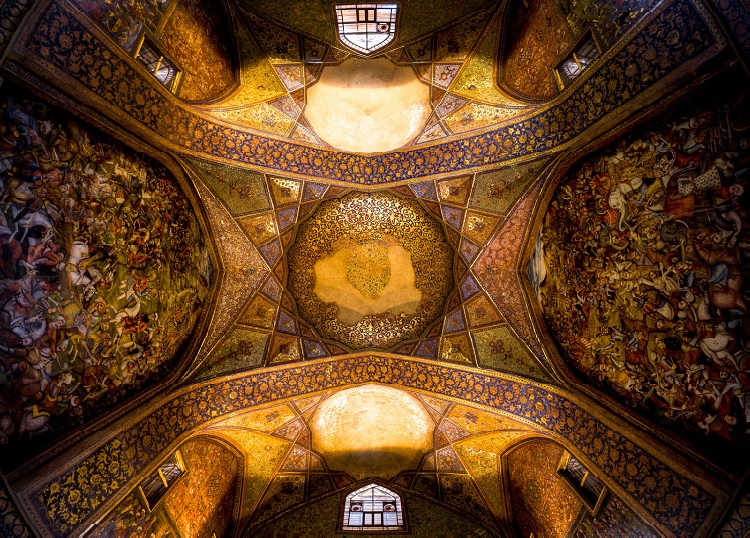
Chehel Sotoun paintings in the main hall – Chehel Sotoon Palace
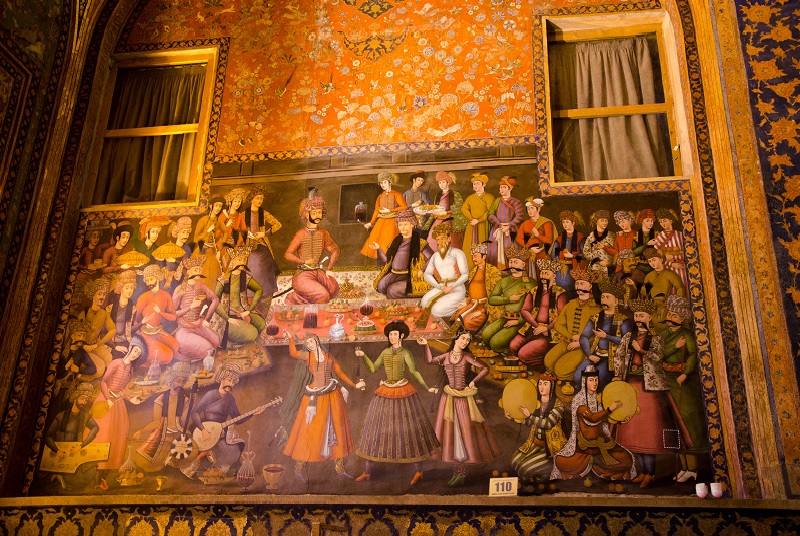
Chehel Sotoun Paintings
Museum of Chehel Sotoun
At the entrance of Chehel Sotoun palace-museum, there is a hall that belongs to the museum. Historical objects from Safavid and Qajar periods are in this place and among these objects we can find all kinds of pottery and glass from the 8th to the 17th centuries AD, porcelain that Shah Abbas ordered, old manuscripts and rugs from the 16th century AD, and inlaid and woodcarving doors belonging to Safavid era.
In addition to checking out the mentioned objects, you can also see functional and decorative dishes belonging to Islamic period, especially Safavid era. Also, this place hosts periodical exhibitions on various occasions. It is good to know that Chehel Sotoun museum is the second museum in Iran after Golestan Palace in terms of antiquity.
More About Chehel Sotoun
Visit Hours
8:30 a.m. to 4 p.m.
Visit Days
Every day except holidays
Nearby Attractions
There are famous and spectacular places near Chehel Sotoun. Some of these places are: Sheikh Lotfollah Mosque which is a masterpiece of historical architecture. Shah Mosque, a UNESCO World Heritage of 16th century. Qeysarie Bazaar, one of the largest and most luxurious shopping centers during Safavid era. And Ali Qapu Palace, a site with elegant and famous miniatures.
Where to Eat Near Chehel Sotoun
Naghshe Jahan Reataurant
Shahrzad Restaurant
Zawa Italian Restaurant.
Like to check out Chehel Sotoon?
This charming site is a part of our multi-day Cultural Tours.
Chehel Sotoun Palace on Map
Keywords: chehel sotun, chehel sotun palace, chehel sotoun isfahan, chehel sotoun palace isfahan iran, isfahan chehel sotoun

